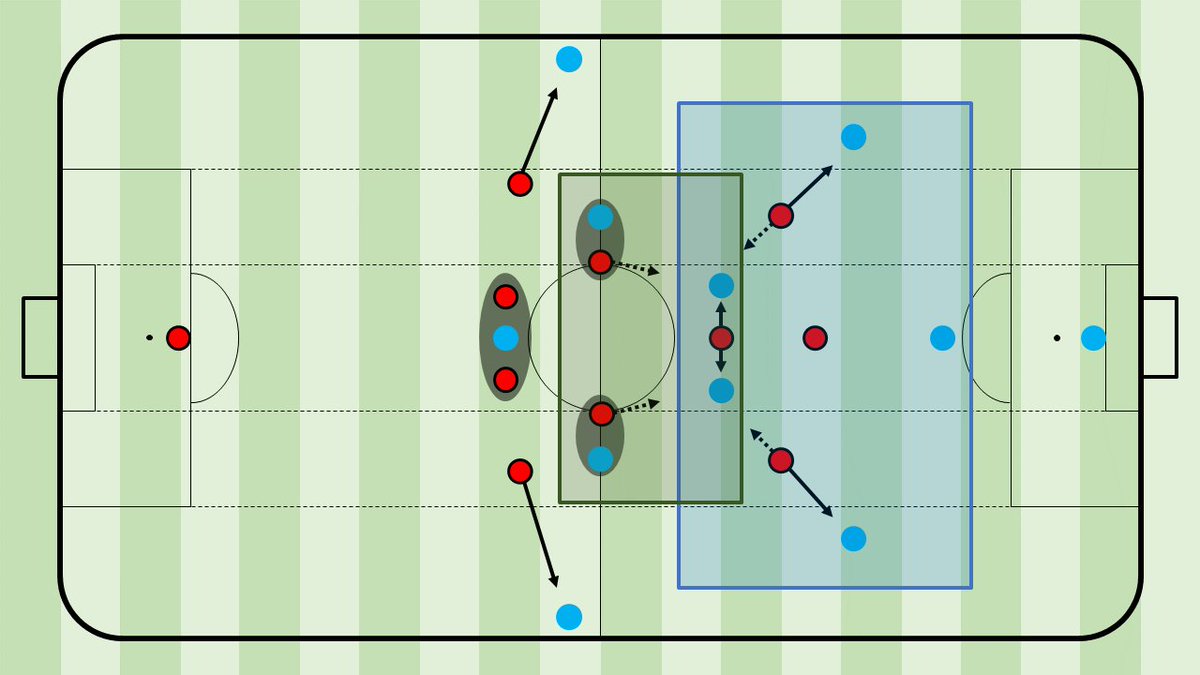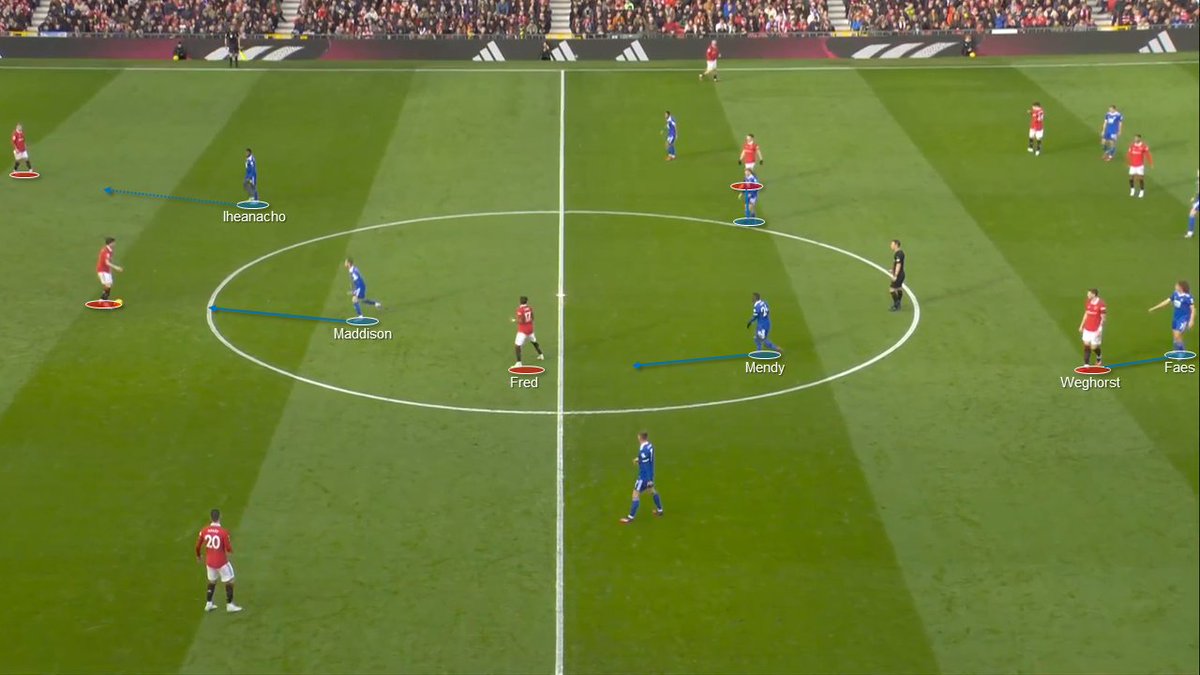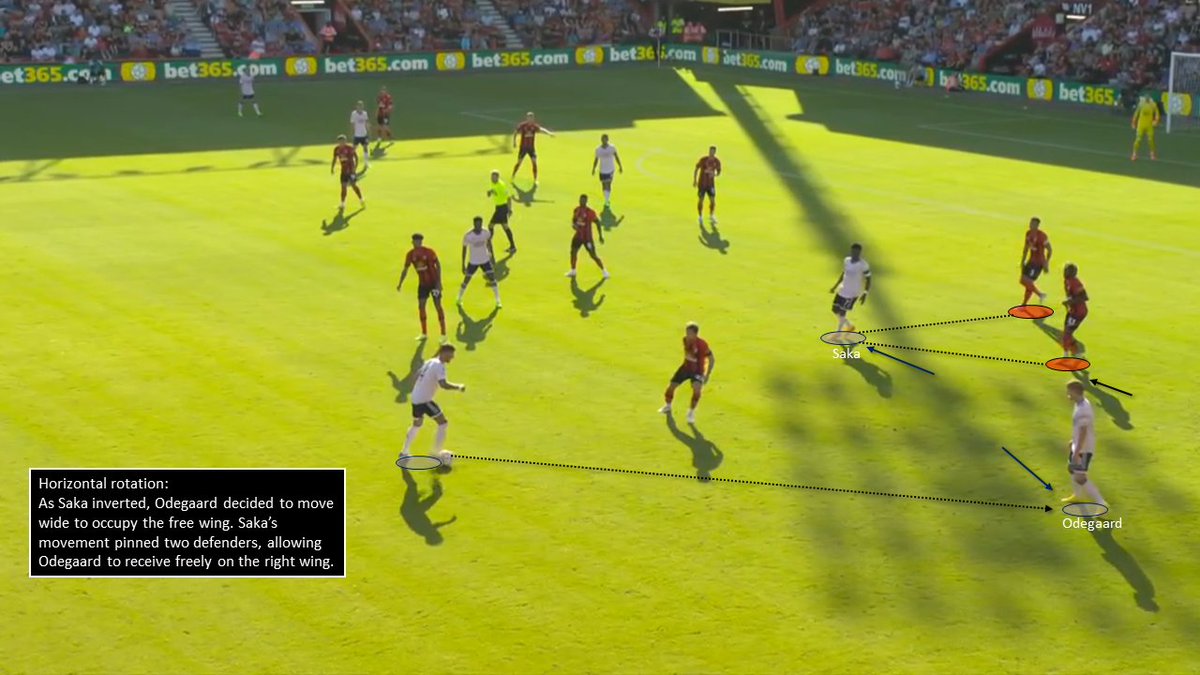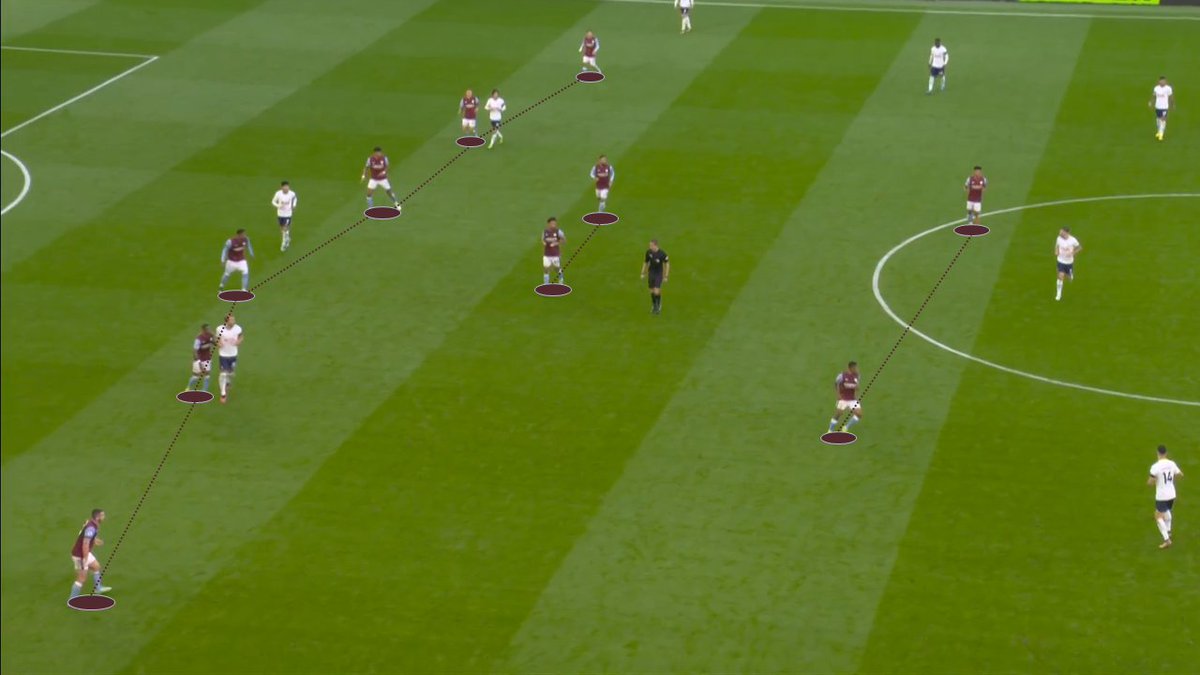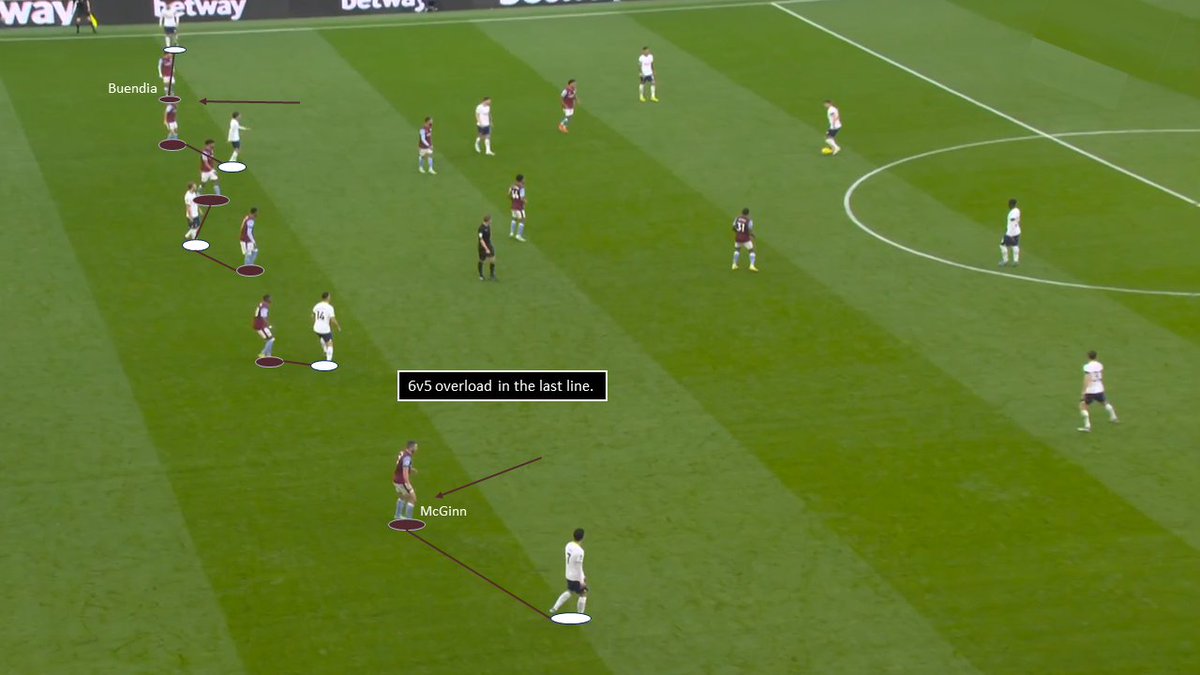Tactical Theory: Rethinking fullbacks
- various positions
- strategical advantages/disadvantages
@SundayShare10 #SundayShare
[THREAD]
- various positions
- strategical advantages/disadvantages
@SundayShare10 #SundayShare
[THREAD]

The task of the conventional fullback was to defend. Back in the day, fullbacks were seen as the worst players on the pitch and often used as pressing triggers (e.g.: Sacchi’s Milan). However, in the last couple of years, this view has changed.
Fullbacks aren’t technically the worst players on the field anymore. Nowadays, even a lot of ex-midfielders such as Alaba, Lahm, or Zinchenko play(ed) in this role. Additionally, coaches like Guardiola saw the potential of the fullbacks in possession and created new positions.
This thread analyses the various positions modern-day fullbacks occupy on the field and the strategical advantages/disadvantages of each of them.
High and wide FBs:
High and wide fullbacks have a lot of advantages in possession, especially in the final third. Firstly, they can stretch the pitch and potentially overload the opponent’s back line.
High and wide fullbacks have a lot of advantages in possession, especially in the final third. Firstly, they can stretch the pitch and potentially overload the opponent’s back line.

Secondly, through overlaps, they can either help their winger in a 1v1 situation or break through themselves. Thirdly, they can also potentially pin the opponent’s winger deeper, creating more space to operate in the centre (=less horizontal compactness). 

The biggest disadvantage lies in defensive transitions. With both fullbacks high and wide, the half-spaces can often be exposed. This allows the opponent to counterattack easily and attack this open space. 

That’s very dangerous, as the way to the goal for the opponent is shorter than through the wide areas, giving the defenders less time to defend and adjust their position.
Inverted/false FBs:
I categorize inverted fullbacks as fullbacks, who occupy the half-space and false fullbacks as fullbacks, who occupy the central zone in possession. However, the advantages and disadvantages are fairly even that’s why they are in the same category here.
I categorize inverted fullbacks as fullbacks, who occupy the half-space and false fullbacks as fullbacks, who occupy the central zone in possession. However, the advantages and disadvantages are fairly even that’s why they are in the same category here.
The main strength of inverted/false fullbacks is that they create a dilemma for the opponent’s wingers, as they have to decide between following the fullbacks inside or staying wide to cut passing lanes further up.
If the winger decides to follow, a pass out wide for a potential 1v1 opens or it’s just a simple space gain for the in-possession side. If the winger decides to stay wider, the in-possession side will usually have an overload in the midfield and can progress from there. 

It’s generally easier to progress through the centre with inverted fullbacks due to the single width occupation. There aren’t just more players positioned in the centre, also more diagonal passing lanes are created. Additionally, underlaps are easier to perform.
Moreover, crosses are shorter in the air from the half-spaces, meaning they are more dangerous, as the opponent has less time to adjust. Furthermore, the rest-defence structure is more compact, guiding the counterattacks mostly through the wings, which takes time. 



When looking at the disadvantages, the open wings can also be problematic, if the opponent has the correct player profiles to exploit these spaces.
Additionally, not every team can play with inverted/false fullbacks, as there are specific qualities needed and the environment needs to be suitable as well (e.g.: wide wingers).
Deep FBs:
Deep fullbacks are particularly effective against narrow pressing schemes, such as Liverpool’s wingers pressing from out to in, as the pressing distance for the wingers is longer.
Deep fullbacks are particularly effective against narrow pressing schemes, such as Liverpool’s wingers pressing from out to in, as the pressing distance for the wingers is longer.

This in turn creates more time for the centre backs to pick a pass, more time for the higher players to adjust their positions and more space for the fullbacks, if they can be reached (e.g.: 3rd man combination), as the pressing winger is disconnected from his teammates. 

Against wider pressing schemes, deep fullbacks can be used to attract pressure and open spaces higher up. 

Deep fullbacks obviously offer less threat in the final third. However, overlaps or underlaps from a deeper starting position can still be effective. Then, the fullbacks often break through with a dynamical advantage.
Additionally, a flat back four can be prone to counterattacks if the ball is lost early in the build-up.
Wrong-footed FBs:
The biggest benefit of wrong-footed fullbacks (e.g.: right-footer as LB) is that they create different passing angles. For example, against a winger pressing from in to out, it’s easier to progress centrally, as the fullbacks can use their preferred foot.
The biggest benefit of wrong-footed fullbacks (e.g.: right-footer as LB) is that they create different passing angles. For example, against a winger pressing from in to out, it’s easier to progress centrally, as the fullbacks can use their preferred foot.

Moreover, when defending against wingers, who like to cut inside, wrong-footed fullbacks are more efficient as they can tackle with their preferred foot.
Asymmetric FBs:
Players have different strengths and not always it’s viable to use both FBs within the same position. Asymmetric fullbacks allow the in-possession side to use the abilities of their players specifically and create more flexibility with different player profiles.
Players have different strengths and not always it’s viable to use both FBs within the same position. Asymmetric fullbacks allow the in-possession side to use the abilities of their players specifically and create more flexibility with different player profiles.
Modern day examples: Liverpool: Alexander-Arnold in the half-space, Robertson high and wide. ManCity 2020/21: 3-2 structure with false fullback Cancelo and deep Walker. Bayern last season with deep Pavard creating a back three and high Davies.
Conclusion:
The position of fullbacks has changed massively in the last couple of years. Coaches noticed their potential and they are now an integral part in possession. I’m already excited for the next revolution!
The position of fullbacks has changed massively in the last couple of years. Coaches noticed their potential and they are now an integral part in possession. I’m already excited for the next revolution!
• • •
Missing some Tweet in this thread? You can try to
force a refresh









